THIS article was written to cover only the basics, and for those with little handgun experience.
Weapon sights come from manufacturers in a variety of configurations and each sight will look different than the others. The rear sight of a weapon may be U-shaped, V-shaped, two dots or a perhaps a straight line. Some sights have small or large dots or are simple notched sights. The general concept of sight alignment and sight picture works no matter how the sights are configured. The keys to shooting your targets where you want to can be accomplished by primarily following these key concepts:
- Proper sight alignment.
- Proper sight picture.
Firing your weapon properly accurately and hitting the target means you have proper sight alignment and sight picture. Sight alignment simply means having the front and rear sights in line with your eyesight so you can shoot straight at your target. Your horizontal axis and vertical axis will be lined up. Sight picture means your target is aligned with your front and rear sights.
Start with illustration 1. In this picture, the shooter extends his arms and holds his weapon level. The shooter is not looking straight down onto his weapon. The shooter is looking straight out along the length of his weapon. He is looking through the rear sight and through the front sight. When he pulls the trigger the front sight is what he will concentrate on.
Vertical Sight Alignment If your front sight is high, your shot will go above your target. The reverse is true as well. If your front sight is low, your shot will go below your target. You want to have your horizontal and vertical axis lined up. See Illustration 2.
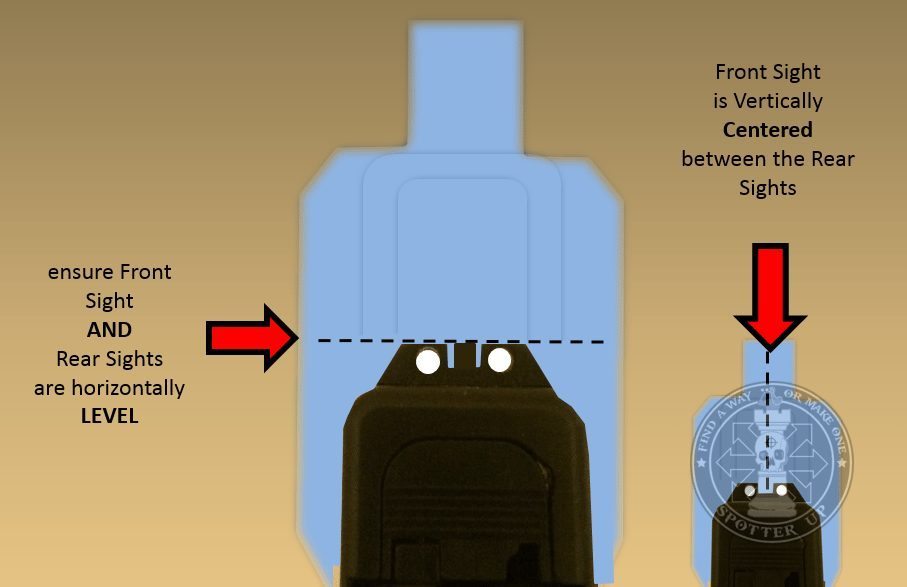
Horizontal Sight Alignment Okay, you have probably heard this before: You want to have an equal amount of light (space) separating the front sight on each side of the notch, as it sits between the rear sight. Treat your rear sight as a window that you look through in order to see your front sight. Do not look at your rear sight. Look through your rear sight. See Illustration 3.
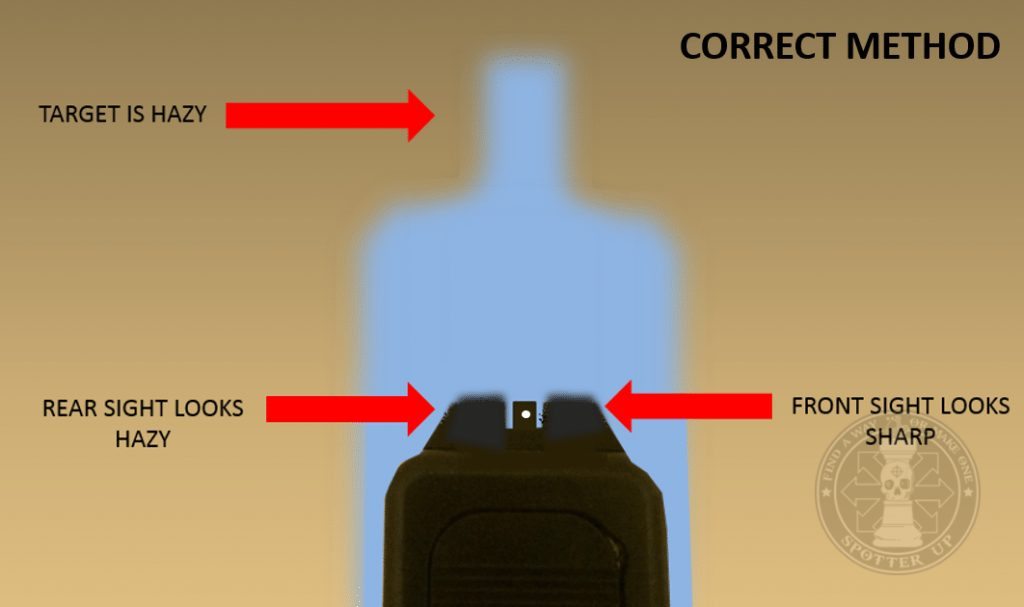
Sight Picture
Okay, once you understand sight alignment it’s time to move onto sight picture. Sight picture means your target is aligned with your front and rear sights. When you pull the trigger, the resulting shot will be accurate, as you intended.
Shot analysis
The top of the front and rear sights were level. There was an equal amount of light separating the front sight and sides of the rear sight notch. This is a perfect shot.
Here are some examples of where your shot might land if you do not follow the fundamentals of sight picture and sight alignment:
There was an equal amount of light separating the front sight and sides of the rear notch, however the front sight was too high.
There was too much light on left side of notch. The top of the front sight was higher than the top of the rear sight. The shot was too high and to the right.
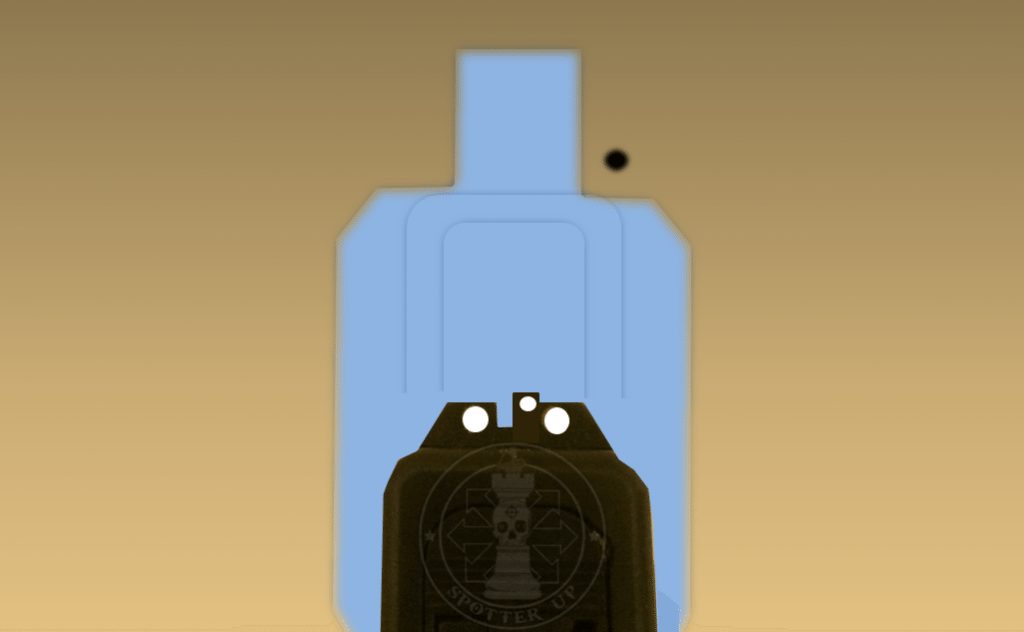
Keep on practicing!
*The views and opinions expressed on this website are solely those of the original authors and contributors. These views and opinions do not necessarily represent those of Spotter Up Magazine, the administrative staff, and/or any/all contributors to this site.

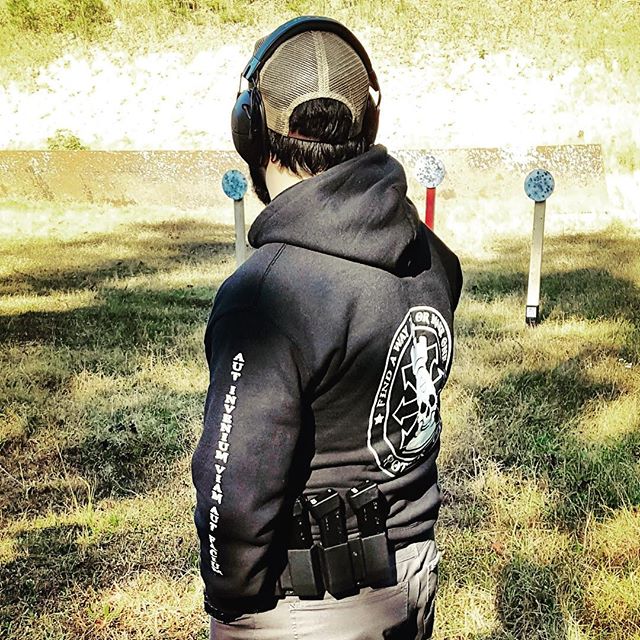
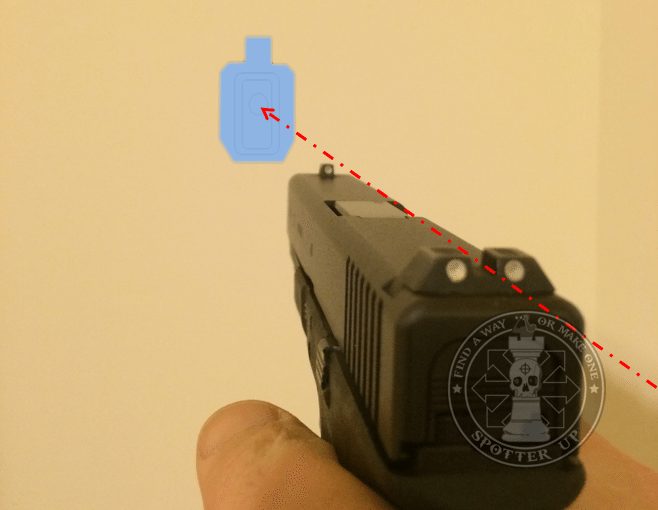
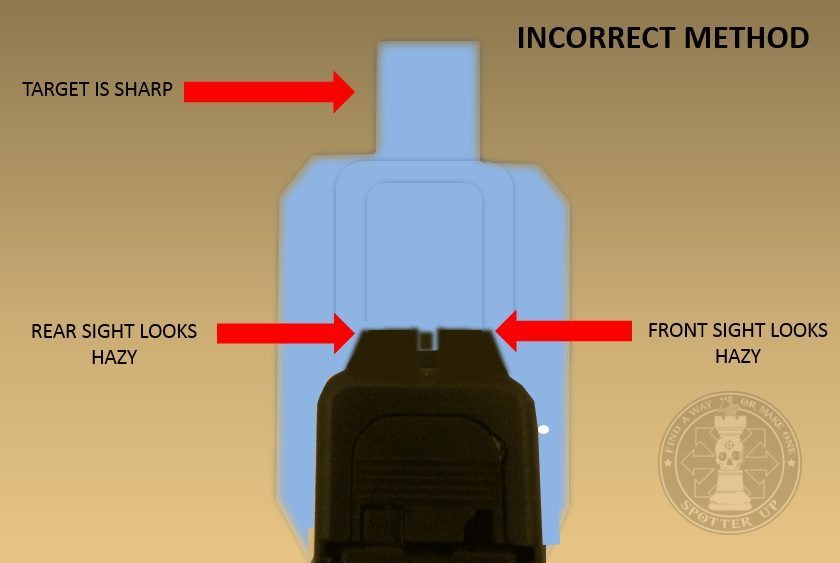
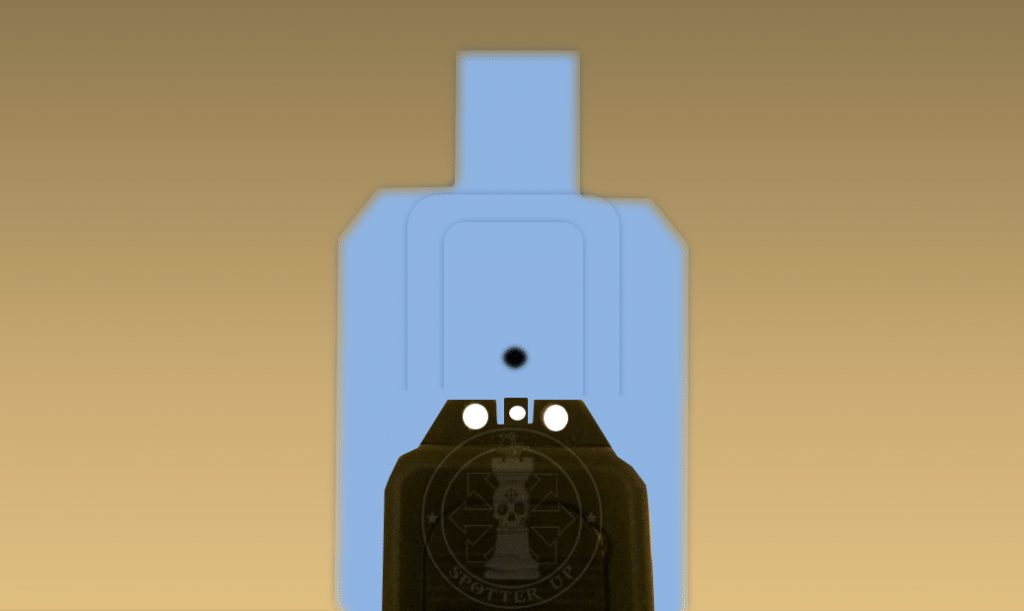
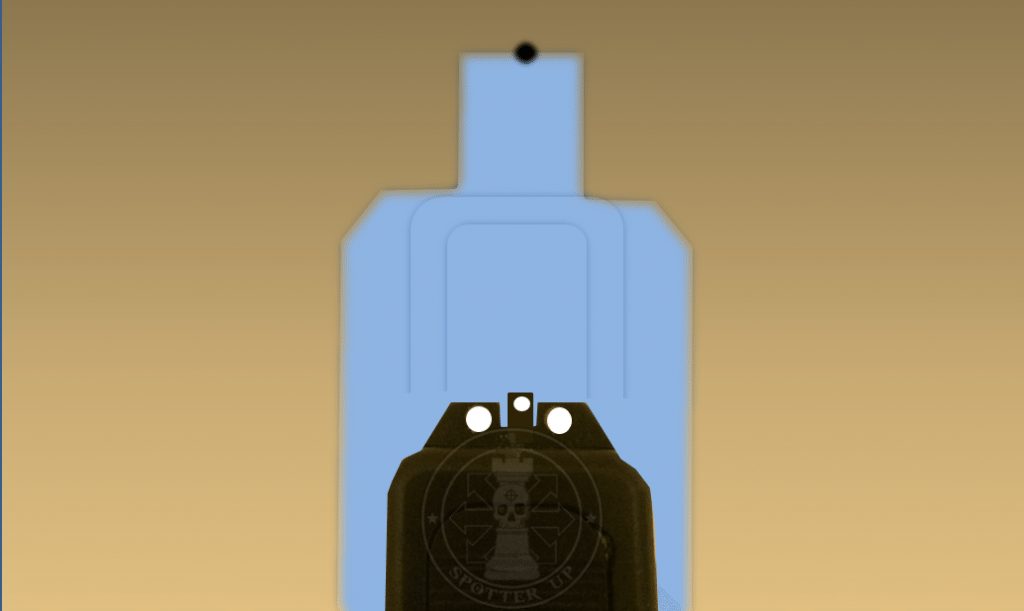
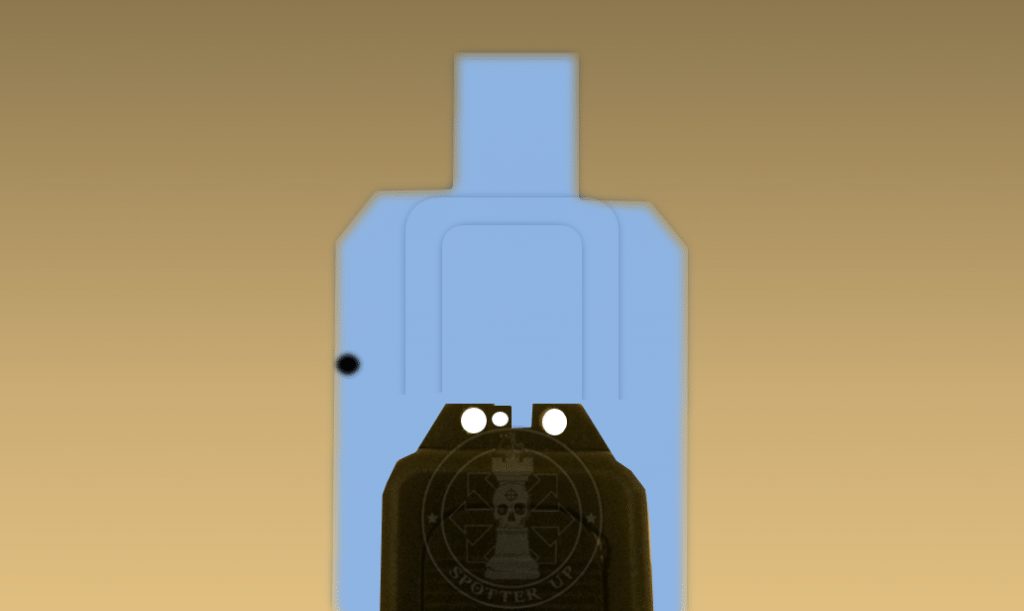
[…] multiple coatings that strengthen the lens, but the coatings that Aimpoint uses add clarity to your sight picture and make the lens crystal […]
Thanks for the explanation.
I have always believed that there were 2 trains of thought, cover the target impact point desired with the front sight or rest it on top of the front sight. It seems that the “correct, (majority rule)” sight picture is the rest the desired point of impact on top of the front sight. It really doesnt matter if you can shoot the gun but if a cover the target shooter will shoot high using your gun, or you, (target on top of the front sight) will shoot low using their gun. Assuming you sight the gun in using your preffered picture.
[…] allows you to see more of your target AND what’s around it, and it just gives you a really clean sight picture through the […]
defferentiate sight alignment and sight picture?